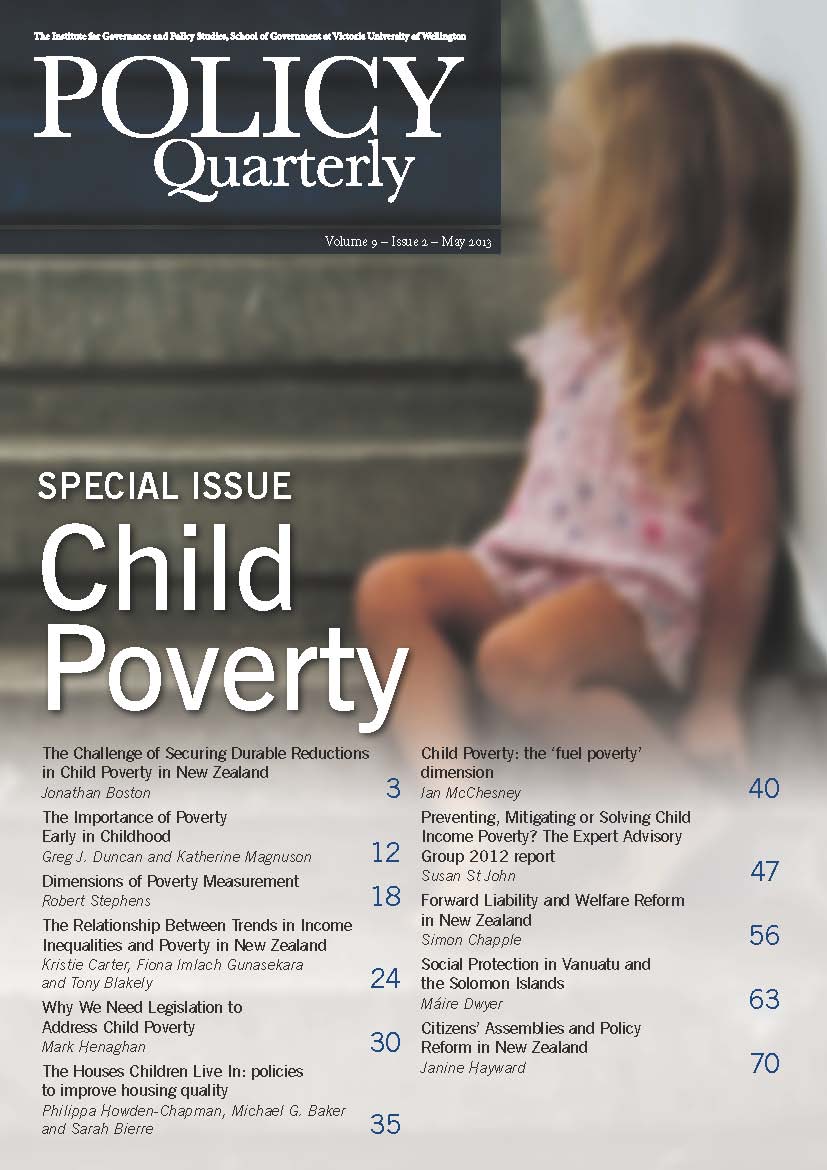The importance of poverty early in childhood
DOI:
https://doi.org/10.26686/pq.v9i2.4448Keywords:
poverty line, median national income, material hardship, psychological well-being, long-term costs, Refashioning income supportsAbstract
Using a poverty line set at 60% of New Zealand’s median national income, nearly one in five New Zealand children (19%) was poor in 2011 (Figure 1, based on Perry, 2012). This poverty rate is considerably less than that of the United States and Canada, similar to that of Australia, the United Kingdom, Germany and France, and much greater that in Scandinavian countries. These rates are far from immutable; New Zealand’s child poverty rate was much higher in 2004 before social policies were enacted which focused, in part, on the country’s child poverty problem.
Downloads
Downloads
Published
Issue
Section
License
Permission: In the interest of promoting debate and wider dissemination, the IGPS encourages use of all or part of the articles appearing in PQ, where there is no element of commercial gain. Appropriate acknowledgement of both author and source should be made in all cases. Please direct requests for permission to reprint articles from this publication to Policy-Quarterly@vuw.ac.nz.



